Figures & data
Figure 1. Schematic diagram of the experimental setup for calibrating half-mini DMAs. The systematic error in flow splitting was included in the correction factor for the ratio of the aerosol concentrations recorded by the two FCEs.
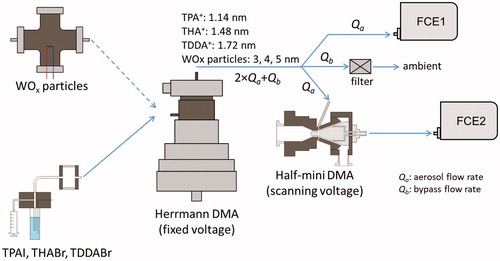
Figure 2. The fitted and theoretical transfer functions of the new half-mini DMA when classifying 1.48 nm molecular ions at the aerosol-to-sheath flow ratio of 5/100 L/min.

Figure 3. The classified electrical mobility diameter at maximum voltage (5,000 V), empirical resolution, theoretical resolution, and the additive broadening factor of the new half-mini DMA as functions of the sheath flow rate. The empirical and theoretical resolutions were obtained according to the fitted and theoretical transfer functions, respectively.
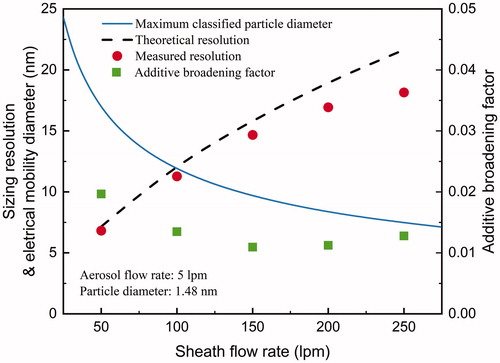
Figure 4. The measured resolutions, theoretical resolutions, and additive broadening factors of the new half-mini DMA and the classical half-mini DMA as functions of the aerosol flow rate. The theoretical maximum relative resolution (1.0) is indicated using the gray-dashed line.
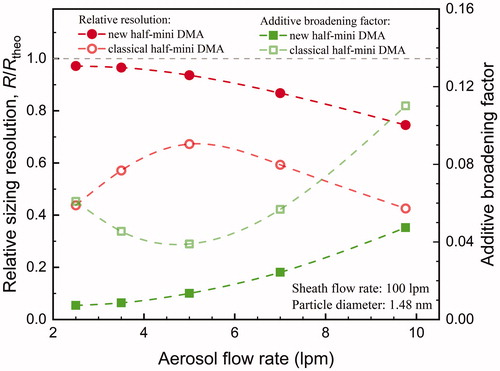
Figure 5. The multiplicative and additive broadening factors of the new half-mini DMA at the aerosol-to-sheath flow ratio of 0.05 and 0.10. The black and gray lines indicate fσ = 1.0 and fσ = 1.1, respectively.
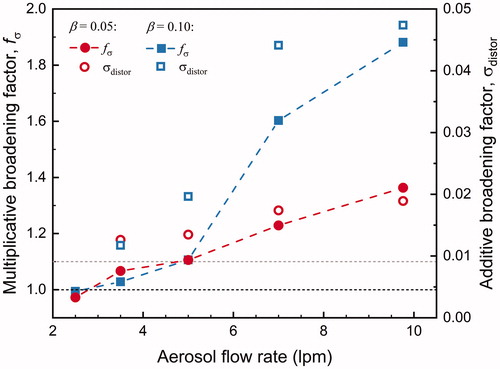
Figure 6. The measured and fitted penetration efficiencies of the new half-mini DMA at various flow rates and classified particle diameters. dp is electrical mobility diameter in nm. Qa is the aerosol flow rate in liters per minute. The electrical mobility diameters of challenge particles were 1.14, 1.48, 1.72, 3, 4, and 5 nm. The different measured penetration efficiencies at the same fitted penetration efficiency were evaluated at the same aerosol flow rate but different sheath flow rates.
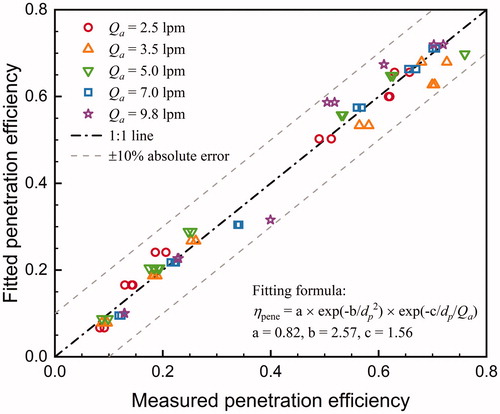
Figure 7. The β·ηpene and measured sizing resolution of the new half-mini DMA as functions of the aerosol flow rate, where β is the aerosol-to-sheath flow ratio and ηpene is the penetration efficiency.
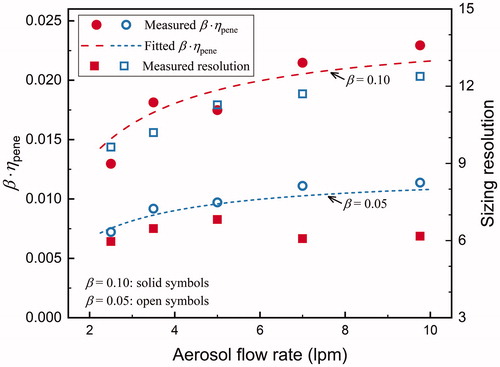
Figure 8. The calibrated (a) transfer functions and (b) products of the transfer functions and the aerosol flow rates of the new half-mini DMA, the mini-cyDMA, the TSI nanoDMA 3085, and the Grimm S-DMA at their typical scenario when the aerosol-to-sheath flow ratios were ∼0.1. N2/N1 is the corrected ratio of the aerosol concentrations measured upstream and downstream of the test DMA (Equation (1)). Qa is the aerosol flow rate of the DMA. The data for the mini-cyDMA were from Cai et al. (Citation2017). The data for the TSI nanoDMA 3085 and the Grimm S-DMA were from Jiang et al. (Citation2011a). The transfer function of the TSI DMA 3086 is not included because its penetration efficiency has not been reported while its sizing resolution for 1.48 nm particles was less than 5.3 (Stolzenburg et al. Citation2018).

